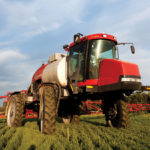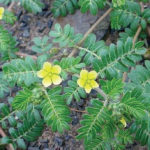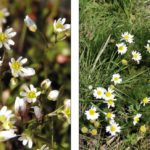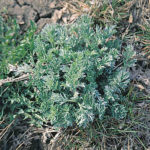Reading Time: < 1 minute Although its exact origin is unknown, devil’s trumpet — otherwise known as jimsonweed — is found in many countries around the world in both agricultural and ornamental settings. Introduced to this province as a contaminant of agricultural seed, this smelly weed is under review by the provincial Agriculture Ministry and it has been recommended to […] Read more

Devil’s trumpet is a potentially deadly invader
Noxious Weeds: Jimsonweed

Timely and effective field scouting covers many bases
Provincial crops specialist says scouting not only pays dividends this year, but allows you to fine-tune practices for future years
Reading Time: 2 minutes Plant density, weed escapes, early signs of disease, and pest populations should all be on your scouting checklist, says a provincial crop specialist. Evaluating the plant population for a given crop lets producers see if the number of plants (per square foot or square metre) matched the target goal that was established at the time […] Read more

Saskatchewan herbicide resistance a heads-up for Alberta
More than half of fields surveyed had a resistant weed, with Group 1-resistant wild oat at the top of the list
Reading Time: 3 minutes Alberta’s herbicide-resistant weed survey is underway this summer, but the results from Saskatchewan paint a grim picture of what to expect here. “Since 2009, there’s been an 89 per cent increase in the land area affected by herbicide-resistant weeds,” said federal research scientist Breanne Tidemann. “We are in a fairly steep incline in terms of […] Read more
‘Wake-up call’ needed for resistance
Provincial crop expert says it’s time to stop pretending it’s not ‘a huge issue’
Reading Time: 3 minutes Weed resistance has been an issue in crop production for many years, but is coming to the forefront as increasing numbers of weeds are no longer responding to herbicides. “Most producers are aware of the issue, but unless it affects them directly, don’t see it as a huge issue,” said provincial crop specialist Harry Brook. […] Read more

Keep watch for this potential new invader
Noxious Weeds: Puncturevine
Reading Time: < 1 minute So far uncommon to Alberta, puncturevine has all the makings of a potential headache to you and me, alike. What started as an annual herb in southern Europe has started spreading into Canada (in British Columbia and Ontario). Like most other weeds, this plant prefers areas of disturbed, bare ground and grows as a summer […] Read more

Know your enemy and its destructive potential, says provincial crop specialist
There’s a critical window for controlling weeds, but it depends on both the crop and the threat posed by individual species
Reading Time: 2 minutes All crops have a critical weed control period when they are most susceptible to significant yield loss from weed competition. The critical weed control period for canola is around 17 to 38 days after emergence. Peas can be as early as two weeks after emergence. “Other, more competitive crops, like the cereals, have a less […] Read more

This quick-spreading weed gets an early start
Noxious weeds: Canada thistle
Reading Time: < 1 minute Spring brings lovely native flowers, but also noxious weeds. The aggressive perennial Canada thistle is a favourite of disturbed soils of all types. It starts sending shoots from horizontal roots to the surface of soil around mid-April, with flowers to follow in mid-June and continuing throughout the summer. Easy to distinguish from other weeds, this […] Read more

Don’t be fooled by this weed’s pretty flower
Noxious weeds: Field scabious
Reading Time: < 1 minute Field scabious was introduced as an ornamental from Europe and is now taking over roadsides and pastures. It can be found throughout central Alberta and has the ability to invade even undisturbed plant communities, such as hayfields. Once established it is very difficult to control. Flowers can be a purple- to blue-coloured clustered head, resembling […] Read more

You won’t raise a glass to this invasive weed
Noxious Weeds: Absinthe wormwood
Reading Time: < 1 minute A tough, semi-woody perennial plant native to Europe and Asia, absinthe wormwood typically grows in stems and forms in a clumping habit. The most distinguishing feature of the plant is its finely divided leaves combined with a silvery-grey colour. Absinthe wormwood also has a very strong and distinct odour which is very similar to sage. […] Read more

Minnesota finds source of Palmer amaranth on CRP land
Reuters — An invasive weed likely entered Minnesota through seed planted on land in a U.S. conservation program, state agriculture officials said on Thursday, bringing to a close an official probe of a growing threat to agricultural production. Infestations of the weed, Palmer amaranth, have affected other states in the U.S. Midwest through seed planted […] Read more

